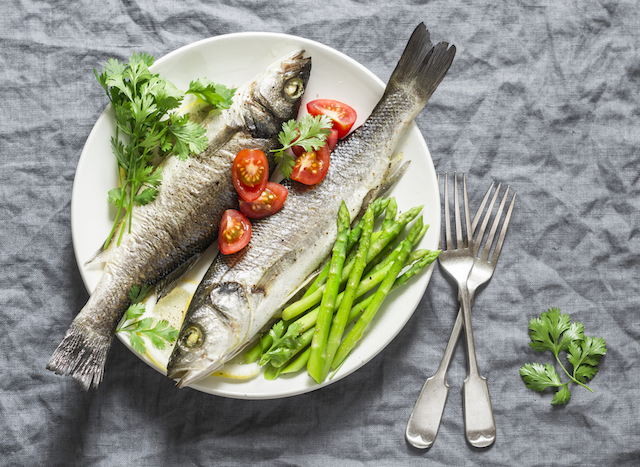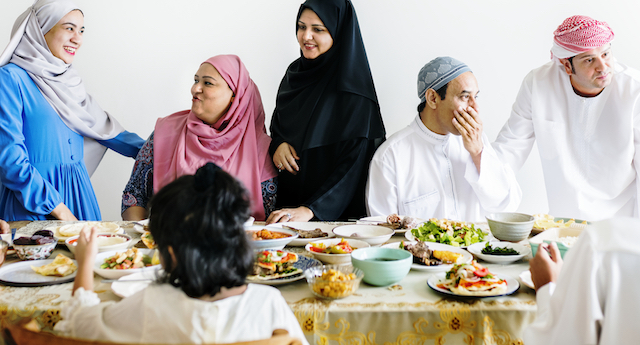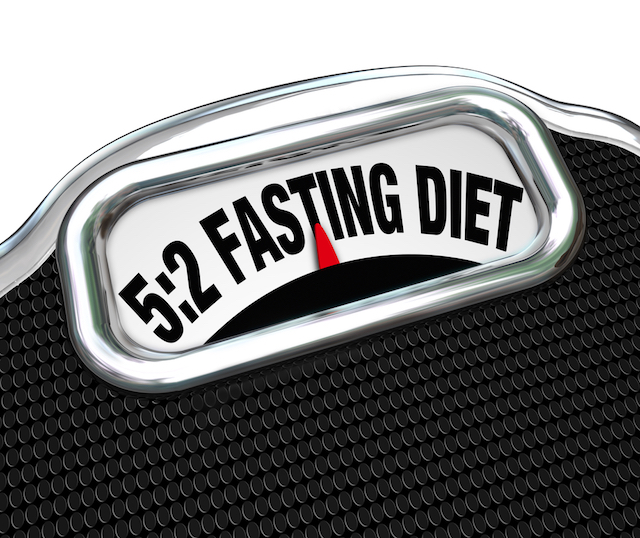- Home
- Blog
- Healthy Weight Loss
- Fasts and fasting – religious and nutrition based
Fasts and fasting – religious and nutrition based
Written by Catherine Saxelby
on Wednesday, 16 January 2019.
Tagged: fasting, health, healthy eating, healthy lifestyle, nutrition, weight loss

Every major religion has some sort of fast. In the 1960s, I grew up as a Catholic and the Lenten ritual of giving up something (for me it was sugar in my tea and coffee) and fasting was a normal part of the year. We also used to fast one hour before Mass so we could receive the sacrament of Holy Communion on an empty stomach. No meat was allowed on Fridays (which later morphed into only the Fridays of Lent). Here we examine the traditional fasts of major religions as well the newer nutrition-based fasts for weight loss. See if it’s something you can manage …
Lent
What is Lent?
Lent is a 40 day period of fasting for Christians of all denominations from Ash Wednesday to Maundy Thursday (the day before Good Friday). Its purpose is to tame the body and help the mind focus on the spiritual in the lead up to Easter. The rules associated with Lent vary from denomination to denomination but, in the Catholic Church, there are two main variants. The first is to fast all the Fridays of Lent as well as on Ash Wednesday and Good Friday. The second is just to fast on Ash Wednesday and Good Friday.

So, what does a Lenten fast consist of?
In the Catholic Church, fasting means eating one meatless meal only on the fast day and is obligatory for anyone aged between 14 and 59. Those who are ill, pregnant or breast-feeding are exempt. This denial is regarded as a penance and in many other denominations other things are given up for the whole of Lent rather than meat only on certain days. You can often hear people say they’ve given up chocolate or watching TV or some other luxury for Lent.
Shrove Tuesday – what is it and when is it?
Shrove Tuesday is the day before Ash Wednesday when Lent starts. In earlier times, the Lenten fast not only prohibited meat on Fridays but milk, eggs and flour for the whole 40 days. Not wanting to waste these items, they were traditionally used up to make pancakes and is why Shrove Tuesday is known by many kids as Pancake Tuesday.
Ramadan
What is Ramadan?
Ramadan is the Muslim fast and lasts for a lunar month. The starting date isn’t known exactly until the moon is sighted for the beginning of the lunar month and as this fast uses the lunar calendar, it moves forward in our calendar each year by around 11 days. In a period of 33 years, it will have been through the whole year. Like the Lenten fast, its purpose is to tame the physical in an effort to concentrate on the spiritual aspects of life.
All adult Muslims fast, except those who are ill, elderly, travelling, pregnant, breastfeeding or menstruating. Those with chronic medical conditions such as diabetes are not expected to fast but many do.

What does Ramadan consist of?
The fast of Ramadan consists of doing without ANY food or fluids from before the morning prayer (around an hour before sunrise) until sunset. Also, Muslims are not permitted to have sexual relations during the hours of the fast. Just as the Christian fast is associated with the Holy Days of Good Friday and Easter Sunday, the Fast of Ramadan is associated with Laylat al-Qadr (the Night of Power) which is the night the Holy Quran descended into the heart of the Prophet Muhammad. The fast concludes at the end of the month with a feast called Eid al-Fitr when Muslim children generally get gifts and new clothes.
When is it?
The likely date of Ramadan each year will depend on the sighting of the New Moon.
Yom Kippur
What is Yom Kippur?
Yom Kippur is the holiest day in the Jewish calendar and is also called the Day of Atonement. It is a 25-hour fast which starts before sunset on the evening before Yom Kippur and ends after sunset on the day of Yom Kippur. If the fast poses a threat to life or health, the restrictions are lifted and children under nine and women who have given birth within the last three days are not permitted to fast.
What does Yom Kippur consist of?
This fast is similar to the Muslim fast as no food, water or sexual relations are permitted during the hours of the fast. It is also regarded as a complete Sabbath and no work should be done. Other traditional restrictions during the fast include not washing, bathing, using cosmetics or perfumes and not wearing leather shoes.
When is it?
Yom Kippur begins on the 10th day of Tishrei, ten days after the start of Rosh Hashanah (the Jewish New Year). It’s generally in September or October.
Modern fasts
While the traditional fasts are religious in origin, the modern fasts are mainly undertaken for health or weight loss reasons but it is interesting to note the religious fasts because they show us that fasting and self-denial are a normal part of life for many people around the world and have been for thousands of years.
On your fast days, you select foods that will satisfy you for the least number of kilojoules/Calories. At the moment, this is protein (fish, lean meat, chicken, tofu) and lots of vegetables, both leafy and starchy. Alcohol is out completely on the fast days.
Fast diets are a way to minimise your intake - not a way of eating for life. Nor are they a weight-loss miracle. Like the Calorie Restriction philosophy to extend lifespan, however, your meals are packed with vegetables, salads and fruit so you’ll get a high intake of vitamins, minerals and phytochemicals which is perfect - but you will be hungry.
Types of fasts
There are three main types of fasts used for health reasons and they are calorie restriction, alternate-day intermittent fasting and 5:2 intermittent fasting.
1. Calorie restriction
This consists of reducing one’s daily intake of kilojoules or Calories. How many Calories you are allowed involves a complex calculation which includes height, current weight, current intake, daily activity, sex and age. The theory is based on some research which suggests that reducing overall intake increases longevity. Some wags say that it just seems longer because you can’t eat enough to satisfy your body’s hunger!
There are some worries associated with Calorie restriction including reducing BMI to dangerous levels in the elderly and thus increasing mortality. Because it encourages starve and binge habits, there’s the possibility of triggering eating disorders by increasing the desire of any sort of food once the fast is completed.
2. Intermittent fasting – alternate day
This is where you fast on alternate days. I recall a diet book from the 1980s known as the Day On, Day Off Diet. The fast here consists of eating around 500 Calories for women and 600 for men. It has been associated with sustainable weight loss and an improvement in cholesterol, glucose and various hormone levels. It would seem that while this type of fast is beneficial for men it has unwanted side-effects in women including menstrual and other hormone-related problems.
3. Intermittent fasting – 5:2
This has become very popular recently with the release of the Fast Diet book by Dr Michael Mosley and Mimi Spencer. It’s a less aggressive, less onerous form of intermittent fasting and involves fasting only two days a week (only 500 Calories for women and only 600 Calories for men). Its benefits, according to the authors, include improved cholesterol and blood glucose levels as well as reduced levels of Insulin-like Growth Factor-1 and a consequent lessening of the risk of age-related cancers; the “switching on of countless repair genes”; and increased levels of neurotrophic factor which may elevate your mood. I reviewed this book a while ago and you can read the review here.

If you’re being realistic, this should be called The 2:5 Diet so you know you have to plan for two days of strict eating/semi-fasting and five days of normal eating. Not the other way around!
What 500 calories looks like
500 Calories or 2000 kilojoules is NOT a lot of food. Expect to be hungry. You get through it by setting your thinking that it’s only for ONE day and you learn to live a day at a time. You learn to use salads, non-starchy vegetables and diet drinks to fill yourself up for negligible kilojoules.
Here’s what the book suggests for Day 1 for a woman on 500 Calories:
Breakfast 142 Calories
Half a tub cottage cheese 100 g
One sliced pear 100 g
One fresh fig 55 g
Dinner 341 Calories
Sashimi made with 3-5 pieces salmon 100 g and tuna 100 g served with soy sauce, wasabi and ginger.
1 tangerine (mandarin)
Total for day 483
4. The 16:8 Intermittent Fast
 16:8 intermittent fasting involves fasting for the 16 hours (including the 8 hours when you’re asleep) and eating only during an 8-hour window. It may support weight loss and improve blood sugar, brain function and longevity. For instance, you eat only between the hours of 10am and 6pm or 12noon and 8pm.
16:8 intermittent fasting involves fasting for the 16 hours (including the 8 hours when you’re asleep) and eating only during an 8-hour window. It may support weight loss and improve blood sugar, brain function and longevity. For instance, you eat only between the hours of 10am and 6pm or 12noon and 8pm.
During your eating period, you should eat a quality diet and drink free beverages like water, unsweetened teas and coffee, or diet drinks.
Is the 16:8 a better option than the 5:2? It all depends. If you need to take medications with food, it’s not for you. Both are a good way to get started. But there needs to be a next step, so you can migrate to a long-term way of eating that you can stick to.
See your doctor
If you’ve never fasted before then see your doctor and explain what you propose to do BEFORE you embark upon it. Fasting isn’t suitable for everyone such as:
- anyone cooking for a family who wants to sit down and share the same meal together
- anyone who seeks to re-train your taste buds and so wants to learn to eat right long-term
- many women find fasting too hard (men cope better for reasons that aren’t clear).
Remember that the main purpose of these modern fasts is to enhance health. You certainly don’t want to damage yours.
The bottom line
All fasts teach you self-denial, something the 21st century isn’t big on. Today everything is geared to satisfying all our appetites and satisfying them NOW! The problem with this is that when we don’t deny ourselves or postpone satisfaction then our appetites become jaded and in order to get the pleasure hit we try having MORE and that’s the road to obesity. It’s just like our mothers and grandmothers told us, the best way is moderation in all things. If nothing else, at least you’ll realise there are options for weight loss that do NOT involve calorie counting or eliminating certain foods.
Originally published in our Newsletter in 2014. First draft by retired naturopath Munaiba Khan.
You may also be interested in...
Foodwatch
The Good Stuff
The Boring Stuff
© 2025 Foodwatch Australia. All rights reserved
Website by Joomstore eCommerce





